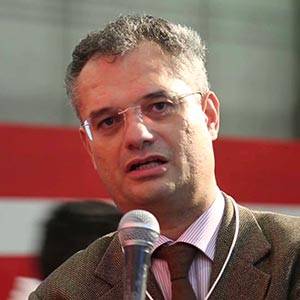DIGITIZED BUILT ENVIRONMENTS AND CULTURAL HERITAGE
DIGITIZED BUILT ENVIRONMENTS AND CULTURAL HERITAGE
ABSTRACT
The conservation movement featured the Italian cultural landscape of the architectural restoration over the last decades, because of its own unprecedented attention paid to the preservation of the listed buildings to be conceived as comprehensively built assets, irrespective of the parts' layered evolution.
Such an approach, focused upon the objects and projects, has been consistent with the technological innovation dealing with analytical and conservative devices and tools, too.
Nevertheless, the contemporary and constrained funding criteria for preserving the built heritage have been quite recently affected by contractual frameworks, close to the Performance-based and Public Private Partnership.
On the other hand, public private partnership implies that the special purposes vehicle, the concessionar, would accept the transfer of the operational risk, instead of acting as the to be reimbursed funder.
This need entails that the conservation of the built assets would enable the use and exploitation of the built heritage in order to make the operational risk affordable. It could appear that the preservation and the occupancy seems controversial and conflicting issues and targets, menacing the public and shared cultural assets. Nonetheless, provided that the conservation of the listed buildings might not questioned, such an oxymoron could be investigated and refused.
The stake shifts from the built elements to the occupied rooms, as well as the planned conservation echoes a diachronic attitude to the tobe preserved built assets. The compliance to the preservation constraints, which has to be accomplished by the company project, impinges upon the users' behaviors, indeed.
It means that the digitization of the architecture, engineering and construction (AEC) industry deeply influences the occupancy management by means either of the gamified and immersive simulation or of the sensored built heritage and the visitors' and customers' mapping and tracking.
In other words, the preservation authorities and public owners could negotiate the allowed and permitted uses and occupancies together with the special purpose vehicle through building information models and agent- or process-driven game engines of the users' behaviors.
Such a behavioral pattern moves from a different assumption, centered on geo-localized and customized services, which urges the use strategy of the listed buildings as a performance-based contractual key driver.
The ultimate goal to be attained consequently becomes the attempt to look at the cultural heritage throughout a connection paradigm, capable to enhance the compliant occupation of the listed buildings when managing the on real time of the users' motions (e.g. visitors) also from a remote location.
The built heritage could be concurrently experienced by the perspective occupants on a virtual as well as on an analog basis.
The listed buildings might assume an evolutional and «transformational» feature as servitized assets.
Parole chiave / Key-words: Planned
Conservation, Public Private Partnership, Information Modeling, Simulation of the Users'
Behaviors, Immersive Reality


